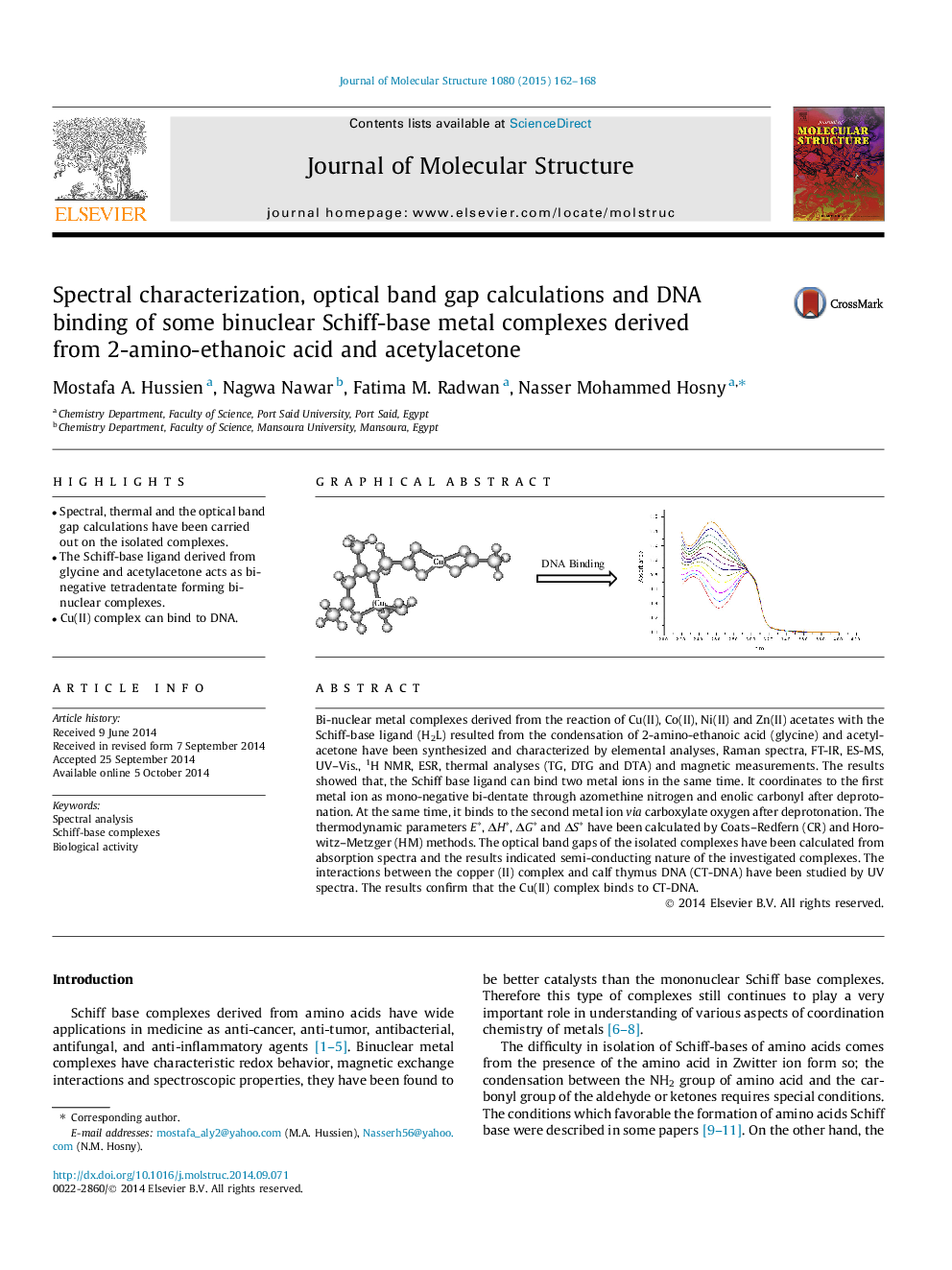| Article ID | Journal | Published Year | Pages | File Type |
|---|---|---|---|---|
| 1402134 | Journal of Molecular Structure | 2015 | 7 Pages |
•Spectral, thermal and the optical band gap calculations have been carried out on the isolated complexes.•The Schiff-base ligand derived from glycine and acetylacetone acts as bi-negative tetradentate forming bi-nuclear complexes.•Cu(II) complex can bind to DNA.
Bi-nuclear metal complexes derived from the reaction of Cu(II), Co(II), Ni(II) and Zn(II) acetates with the Schiff-base ligand (H2L) resulted from the condensation of 2-amino-ethanoic acid (glycine) and acetylacetone have been synthesized and characterized by elemental analyses, Raman spectra, FT-IR, ES-MS, UV–Vis., 1H NMR, ESR, thermal analyses (TG, DTG and DTA) and magnetic measurements. The results showed that, the Schiff base ligand can bind two metal ions in the same time. It coordinates to the first metal ion as mono-negative bi-dentate through azomethine nitrogen and enolic carbonyl after deprotonation. At the same time, it binds to the second metal ion via carboxylate oxygen after deprotonation. The thermodynamic parameters E∗, ΔH∗, ΔG∗ and ΔS∗ have been calculated by Coats–Redfern (CR) and Horowitz–Metzger (HM) methods. The optical band gaps of the isolated complexes have been calculated from absorption spectra and the results indicated semi-conducting nature of the investigated complexes. The interactions between the copper (II) complex and calf thymus DNA (CT-DNA) have been studied by UV spectra. The results confirm that the Cu(II) complex binds to CT-DNA.
Graphical abstractFigure optionsDownload full-size imageDownload as PowerPoint slide
